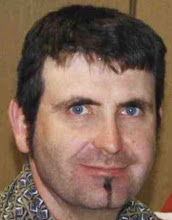As mentioned in my previous post Adventure in Netbook Land (1), my Aspire One netbook came with Linpus as OS.
At first glance, Acer's customized Linpus looks OK, very much like Ubuntu Netbook remit, except it has a green theme(like Mint). It seems to have the minimum amount of applications to get you started, and has the wonderful capability of detecting the SD card you insert in the slot, and automatically assigning it as extended disk space – very neat.
Yet it felt sluggish, somehow. Although optimized for the netbook (Cheese Webcam Booth included), and supposedly using little RAM compared to most OS, loading applications seemed slow. Furthermore, the default applications looked underwhelming in a strange way. Finally, I could not seem to find an easy way to update or upgrade applications, and in no small part caused by a lack of disk space (!). Tried to free some disk space but got really confused with the file system, the use of the SD card, etc.
My friend Jon lent me an external DVD drive and a pen drive with Ubuntu Netbook Remit. I still had a CD of Windows XP somewhere, so I decided to wipe my netbook clean and see what performance I would get from Windows XP.
Installation from CD went fine, albeit taking a while. Having worked with newer OS such as Ubuntu, OS.X, or Vista/Windows 7, I had forgotten how much time and user interaction XP needs. I must confess I am a little fussy about languages, Unicode, etc. that Windows throws in, and I go through the whole region/country/language customization process, checking every menu and screen so as not to get surprises later on.
None of the drivers are found/installed, so there is no sound, no network, basic 800x600 display, etc.
Fortunately, I had downloaded the drivers from Acer's web site and had them on a pen drive (USB works so-so). I copied them on the hard drive and installed them one by one starting with processor and bus, and ending with camera. Everything worked fine.
I had forgotten how little disk space XP first uses (before updates and 'extras' such as Net.2.0, etc. So I was happily surprised at first. I installed Chrome (I stopped using IE for many years for obvious reasons, and will never use it again, as there's absolutely no reason to do it, even the newer version) and was surfing the web OK.
Didn't last long though, performance got sluggish very quickly. After doing some investigation, I came to the conclusion that the problem was with the built-in SSD.
SSD are – overall – very fast, compared to mechanic disk drives. This reputation mainly comes from the fact that Read-access is way faster, enabling a SSD equiped laptop to start-up seemingly in seconds and load applications and documents in milliseconds compared to a laptop with even a 10,000 RPM disk drive. Now, most recent SSD models also boast decent write performances.
This is not the case with this netbook's 8.0 GB SSD. It is, in fact, a well known problems, and there are numerous blogs or help requests on the Internet about it. Of all the different tips and work-around to alleviate the issue, the best one I found was to install Flashfire (http://flashfire.org/xe/).
Flashfire web site describes it as a software for Solid-State Drives that host RAM to enhance random write performance of a SSD and is especially useful for the system using low-end SSDs. That very much explains what it is and how it works. And yes, it works. Very well.
With Flashfire, my netbook magically started to perform like a full blown laptop. I loved it.
Once more, this was to be short lived.
The first serious problem I had was with Windows Update. After an update that required a restart, my netbook kept crashing before I even managed to log in. As I investigated, I found out that the update could not finish its task on reboot because of Flashfire. Even when starting the XP in Safe Mode. After trying every trick I knew to no avail, I decided to reinstall Windows from scratch, apply ALL updates, install Flashfire, and turn the updates off. Once again, my netbook was working great.
